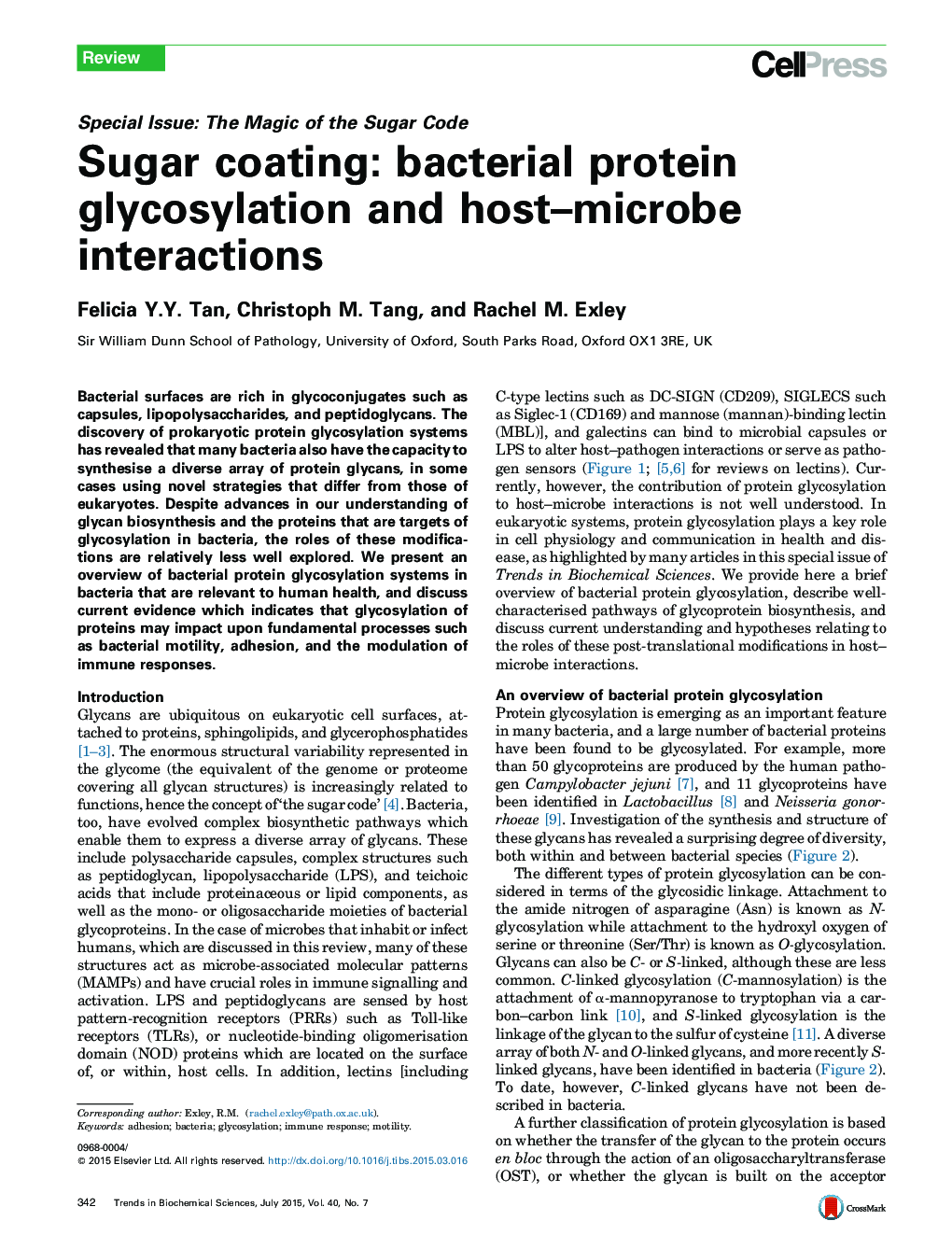| Article ID | Journal | Published Year | Pages | File Type |
|---|---|---|---|---|
| 2031609 | Trends in Biochemical Sciences | 2015 | 9 Pages |
•Bacteria adorn their surfaces with a variety of diverse glycan structures.•Protein glycosylation pathways involve block or sequential transfer of sugars.•Surface protein glycans may impact on motility, adhesion, and immune escape.
Bacterial surfaces are rich in glycoconjugates such as capsules, lipopolysaccharides, and peptidoglycans. The discovery of prokaryotic protein glycosylation systems has revealed that many bacteria also have the capacity to synthesise a diverse array of protein glycans, in some cases using novel strategies that differ from those of eukaryotes. Despite advances in our understanding of glycan biosynthesis and the proteins that are targets of glycosylation in bacteria, the roles of these modifications are relatively less well explored. We present an overview of bacterial protein glycosylation systems in bacteria that are relevant to human health, and discuss current evidence which indicates that glycosylation of proteins may impact upon fundamental processes such as bacterial motility, adhesion, and the modulation of immune responses.
